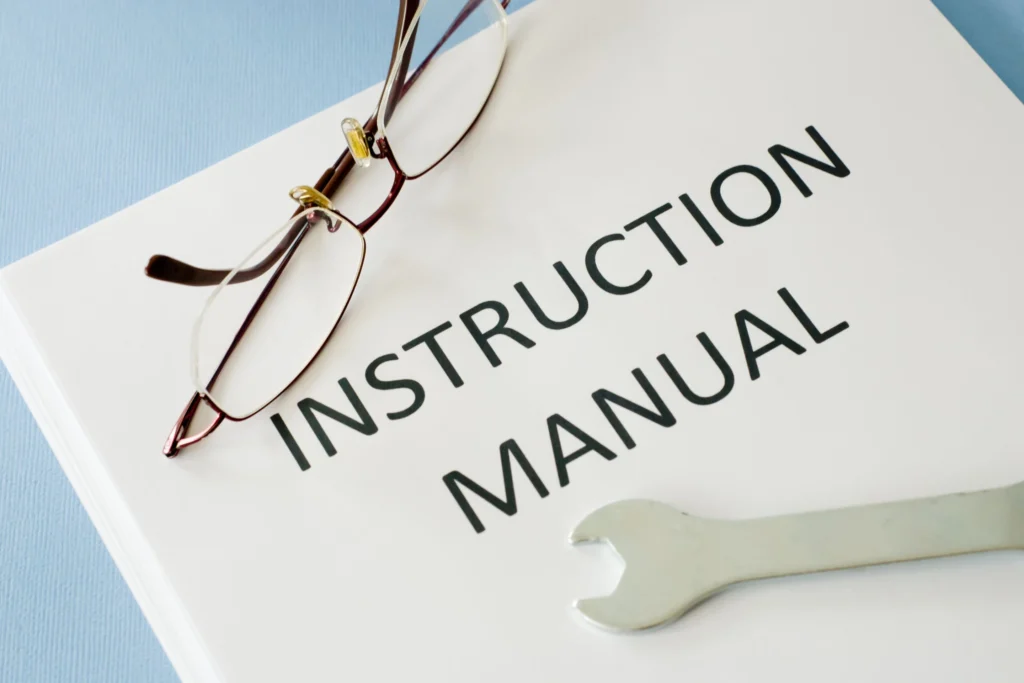INTRODUCTION FOR DEVELOPING EFFECTIVE WORK INSTRUCTION
This training is designed to equip you with the essential knowledge and skills to develop, implement, and maintain effective work instructions within your organization. Whether you’re new to creating work instructions or looking to refine your existing processes, this session will provide practical tools and insights to help you write clear, consistent, and actionable work instructions.
LEARNING OBJECTIVE
Understand the Importance of Work Instructions
- Equip participants with an understanding of the role and significance of work instructions in standardizing processes, improving productivity, and ensuring quality.
Learn the Key Elements of Work Instructions
- Ensure participants are familiar with the essential components that make up a work instruction, such as structure, language, visuals, and safety requirements.
Develop Practical Skills in Writing Work Instructions
- Provide hands-on experience for participants to draft and refine their own work instructions, including the use of appropriate language, visuals, and step-by-step procedures.
Ensure Effective Implementation and Distribution
- Teach participants how to implement, communicate, and distribute work instructions effectively within the organization to ensure their use and adherence.
Learn Best Practices for Updating and Maintaining Work Instructions
- Ensure participants understand how to manage and maintain work instructions over time, including version control and keeping instructions up to date.
Measure and Improve the Effectiveness of Work Instructions
- Help participants learn how to measure the effectiveness of their work instructions and use feedback for continuous improvement.
BENEFITS
Consistency and Standardization
- Work instructions ensure that tasks are performed consistently, leading to standardized procedures and reduced variation across the organization. This results in fewer errors and higher overall efficiency.
Improved Quality and Safety
- Properly developed work instructions can improve product quality by outlining clear procedures and ensuring safety protocols are followed, thereby reducing risks.
Enhanced Employee Performance and Productivity
- Clear work instructions help employees understand their tasks more quickly and accurately, leading to increased productivity and reduced training time.
Reduced Training Time for New Employees
- Work instructions provide a ready-made reference for onboarding new employees, allowing them to quickly get up to speed with minimal supervision or guidance.
Streamlined Communication
- Work instructions serve as a clear, structured communication tool, ensuring that everyone follows the same guidelines. This helps to avoid miscommunication and misunderstandings.
Easier Identification and Correction of Issues
- Well-documented work instructions make it easier to spot inconsistencies or errors in processes. This enables organizations to identify bottlenecks and areas for improvement quickly.
Compliance and Regulatory Adherence
- For industries where compliance is critical, work instructions provide a documented process that helps meet regulatory requirements and ensures audit readiness.
Continuous Improvement
- Regular updates and revisions to work instructions allow organizations to adapt to changes in processes, technology, and industry standards, fostering a culture of continuous improvement.
WHO SHOULD ATTEND
This training is beneficial for a wide range of professionals involved in product development, manufacturing, and quality management, particularly in industries where high product quality and customer satisfaction are critical
TRAINING METHODOLOGY
Face to Face lecture, Pre-Post Test Evaluation, Quizzes, Presentation, Case Study, MCQ etc.
COURSE OUTLINE
Session 1: Introduction to Work Instructions
- What are Work Instructions?
- Definition and purpose
- Importance in standardizing processes and ensuring quality and safety
- Difference between work instructions, SOPs, and policies
- Why Work Instructions Matter
- Ensuring consistency and efficiency
- Reducing errors and rework
- Improving training and onboarding
- Real-life Examples of Effective Work Instructions
- Success stories from various industries (manufacturing, healthcare, etc.)
Session 2: Key Components of a Work Instruction
- Basic Structure of a Work Instruction
- Title and purpose
- Scope and audience
- Materials or tools required
- Step-by-step procedures (with clear, actionable language)
- Visuals (images, diagrams, flowcharts, etc.)
- Safety precautions and quality checks
- Troubleshooting tips
Assignment/Class Exercise 1
Best Practices for Writing Clear Work Instructions
- Use simple and precise language
- Break tasks into manageable steps
- Use active voice and avoid jargon
- Include visual aids to enhance understanding
Hands-On Practice
- Group Exercise: Creating a Work Instruction
- Break participants into small groups
- Assign a simple task to each group (e.g., creating a work instruction for a common office task or a production process)
- Groups will:
- Write a draft of the work instruction
- Design visuals (e.g., step-by-step diagrams or screenshots)
- Share and discuss their work with the rest of the participants
- Feedback and Refinement
- Trainer reviews the work instructions created by each group
- Discuss strengths and areas for improvement
Session 4: Implementing Work Instructions
- How to Implement and Distribute Work Instructions
- Best practices for ensuring work instructions are accessible and followed
- Digital tools for creating and managing work instructions (e.g., document management systems, intranet platforms)
- Training employees on how to use work instructions
- Version Control and Updates
- How to handle changes in processes
- Importance of keeping work instructions up-to-date
- Tracking revisions and managing feedback
Session 5: Measuring Effectiveness
- Key Metrics for Evaluating Work Instructions
- How to track adherence and effectiveness
- Getting feedback from employees who use the instructions
- Identifying opportunities for improvement
- Continuous Improvement
- Encouraging a culture of feedback
- Using data to improve the instructions over time
Session 6: Q&A and Wrap-Up
- Open floor for any final questions and discussions
- Review key points learned throughout the day
- Provide resources and further reading materials on work instruction development
- Closing remarks and next steps for participants


